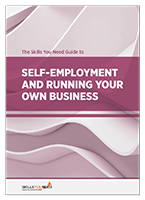Getting Your Freelancer Rates Right:
How to Price Yourself Correctly
See also: Developing a Business Idea
The freelance community has been on an upwards trajectory for many years. This year it’s the chosen approach to work for more than 41% of the American workforce—and the numbers are steadily increasing.
But despite the large population of freelancers, many are still stumped when it comes to pricing their skills and services in the correct way.
“Stop giving away your time and talents. Value what you know and start charging for it.”
- Kim Garst
This is mainly due to two things: the wide variety of different skills that freelance work can cover, and the stress of having to put a price on your own work.
The term “freelancer” covers a wide berth of professionals from very different fields, so there can be no set price for all freelance workers. There is no one-size-fits-all option.
In addition to this, many people struggle to determine how much they should be charging clients. There are many different criteria to consider, and the potential for under or over-charging can cause some anxiety.
Fortunately, there are ways to figure out what you should be charging for your freelance work that are simple, fair, and keep you up to speed with others in the freelancer game.
Four Criteria To Keep In Mind
When creating a pricing system for your freelance work, there are several criteria that you should keep in mind. The combination of these five variables can help you gain a better understanding of what you should be charging, and where it is safe to make adjustments along the way.
No matter what field you work in, every freelancer comes from a unique background with a personal record of experience, skills, and flair.
You will need to sort through the variables of what brings your profession to life if you want to charge clients in a way that’s appropriate and fair—and market relatable.
Experience
Your experience plays a large factor in how much clients should pay you. Regardless of what your skill set is, experience tells people how long you have worked at refining it. The more experienced you are, the higher you can set your rates.
If you have a low level of experience, clients will be less trusting of your abilities, and you will need to compensate by charging a lower rate. Once you’ve worked with a couple of clients and gained a bit more experience, you can adjust your prices as you go.
Qualifications
Your qualifications are what most clients will be looking for when seeking a freelancer, and they can help you determine how to set your rates. If you have a degree or qualification in a certain area, you can charge a higher rate because it implies a higher level of expertise.
Even if you don’t have a university degree, there are plenty of smaller online credentials you can receive for internet-based courses. These credentials bump up your resume and make you a more attractive candidate for freelance jobs.
Complexity
Each project that you tackle will come with its own level of complexity. But you can create a price system that caters for more intricate and specialized jobs. If all the work you do requires a high level of skill or intensive effort, you can adjust your general prices upwards.
You deserve to get compensated for jobs that require more precision, so make sure to consider the complexity of work when calculating your rates.
Basic needs
In a regular job, employees are paid based on the skills or services they provide, in addition to what is considered the appropriate living wage.
Consider how much money you need to survive when calculating your freelance rates. What are your monthly costs? What expenses do you need to cover in order to turn in high-quality work? The answers to these questions will help you curate an appropriate pricing system.
Find A Rates System That Suits Your Work
These two systems take different approaches to freelancer price calculation, allowing each individual to pick the one that suits their profession and work ethic best.
1. Hourly rates
This is probably the most popular method for charging clients in the freelancer industry. Easy to calculate and simple for clients to understand, the hourly rates system simply entails setting a fixed price for every hour of work you put into a project.
This method works particularly well for freelancers who work long hours, because it ensures they get compensated for every bit of time they invest in a project. It also means that if a project takes longer than expected, you won’t have to work for free.
That being said, it also means that short projects won’t result in very high compensation. Using your four criteria, you can determine how much you think an hour of your time is worth and get clients to commit to paying you through each step of the way.
2. Project-based rates
This rates system focuses more on the result than the process. By charging clients a lump sum for the completion of each project, you can earn a higher revenue on short projects and maintain more control over your prices in general.
The biggest benefit of project-based rates is that you get to choose exactly how much you want to charge for each individual project, instead of receiving a flat rate. If you end up working faster than anticipated, you won’t have to forfeit any part of your income.
The downside is that you will not get to charge extra for projects that are more complex or time-consuming than initially expected.
Whichever rates system you choose, it’s essential that you explain it clearly to the client upfront. When you invoice, your invoice should clearly break down the pricing structure and how it applies to the work completed. For example, a photographer’s invoice would include the hourly rate for shooting and editing, or a writers invoice would include the word count of the project undertaken.
This builds trust and ensures that clients know exactly what you’ve charged for, and why.
Further Reading from Skills You Need
The Skills You Need Guide to Self-Employment and
Running Your Own Business
If you are thinking about running your own business, or already do so, but feel that you need some guidance, then this eBook is for you. It takes you through self-employment in easy steps, helping you to ensure that your business has more chance of success.
The Skills You Need Guide to Self-Employment and Running Your Own Business is the guide no new or aspiring entrepreneur can afford to be without!
Based on our popular self-employment and entrepreneurship content.
Have the Confidence to Be Flexible with Your Rates
At the end of the day, what makes freelancer rates so challenging is that each project is unique. Charging a fixed rate can feel a lot like walking a tightrope. Sometimes it works in your favour, sometimes it does not.
Staying up to date on global freelancer rates in your field will help you gain a better idea of what you should be charging, and can encourage you to be confident about your prices.
Although it might take a while to build up confidence, being flexible with your rates can help you earn the income you deserve. All while staying true to your work ethic and delivering high-value results.
The best thing about being a freelancer is that you are your own boss. If the rates you are currently advertising no longer work for you, change is just a click away.
About the Author

Lina Becker started her career in education as a remedial teacher. In 2012 she became a freelance editor, working with various media outlets, covering topics ranging from education to productivity.
Lina is fascinated by people using their energy to grow into better versions of themselves and use their untapped potential.


